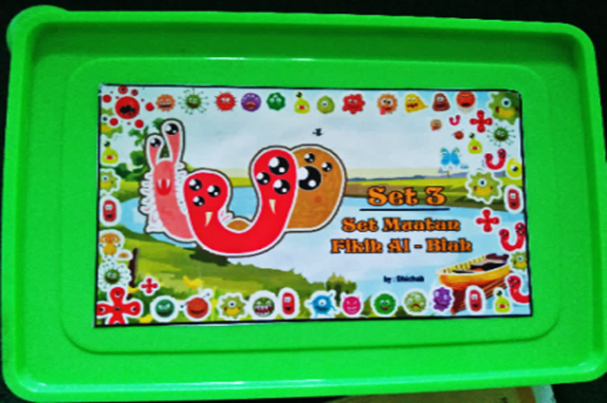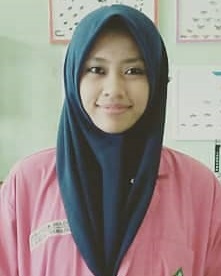Developing bacterial set box media containing fiqh al biah for Islamic senior high school
DOI:
https://doi.org/10.22219/jpbi.v7i1.12944Keywords:
Fikih Al Biah, Bacterial matery, BSB lesson mediaAbstract
The limitations of bacterial visualization media make bacteria consider as abstract and difficult material to study. Furthermore, the implementation of bacteria material and the integration of Islamic values are difficult to teach. This research aimed at developing and validating the BSB (Bacterial Set Box) media containing fiqh al biah. The method used in this research was R&D (Research and Development) with 4D model (Define, Design, Develop, and Disseminate) by Thiagarajan et al. The media developed was three dimensions (3D), which was packed up in a box which contained three packages. The first box was bacterial visualization; the second box was bacterial classification; the third box was 3D box containing fiqh al biah. The field test was carried out in Al Azhar Islamic Public School 16 and MA Nurussalam Semarang. The results showed that the validation percentages were 94% (material expert), 79% (media expert), 96% (integration expert), 92% (biology teacher of Al Azhar Islamic Public School 16), and 86% (biology teacher of MA Nurussalam). A pilot scale test and a large-scale test showed very feasible. It can be concluded that BSB media containing fiqh al biah is very feasible to use.
Downloads
References
Arifin, A. S., & Lestari, E. S. (2020). Genetics bacterial teaching materials development based on flipbook in microbiology subject to improve learning motivation. Jurnal Pendidikan Biologi (JPBIO), 5(2). https://doi.org/10.31932/jpbio.v5i2.862
Aripin, I., & Suryaningsih, Y. (2020). Developing btem-based virtual biology laboratory to improve students’ critical thinking skills on the concept of bacteria. Scientiae Educatia: Jurnal Pendidikan Sains, 9(2). https://doi.org/10.24235/sc.educatia.v9i2.7379
Aryulina, D., & Riyanto, R. (2016). A problem-based learning model in biology education courses to develop inquiry teaching competency of preservice teachers. Cakrawala Pendidikan, 35(1). https://doi.org/ 10.21831/cp.v1i1.8364
Barrows, C. W., Murphy-Mariscal, M. L., & Hernandez, R. R. (2016). At a crossroads: the nature of natural history in the twenty-first century. BioScience, 66(7), 592–599. https://doi.org/10.1093/biosci/biw043
Chavan, R., & Patankar, P. (2018). Perception of biological concepts among higher secondary teachers: a study. Aarhat Multidisciplinary International Education Research Journal (AMIERJ), 7(23), 144–153. https://files.eric.ed.gov/fulltext/ED593125.pdf
Çimer, A. (2012). What makes biology learning difficult and effective: students’ views. Educational Research and Reviews, 7(3), 61–71. https://doi.org/10.5897/ERR11.205
Clark, T. W. (2008). Developing policy‐oriented curricula for conservation biology: professional and leadership education in the public interest. Conservation Biology, 15(1), 31–39. https://doi.org/10.1111/j.1523-1739.2001.99007.x
Davis, B., & Summers, M. (2015). Applying dale’s cone of experience to increase learning and retention: a study of student learning in a foundational leadership course. QScience Proceedings, Engineering Leaders Conference 2014 on Engineering Education, 2015(6), 1–8. https://doi.org/10.5339/qproc.2015. elc2014.6
Efe, H. A. (2017). The effects of using diorama on 7th grade students’ academic achievement and science learning skills. Asia-Pacific Forum on Science Learning and Teaching, 18(1), 1–14. https://www.eduhk.hk/apfslt/download/v18_issue1_files/efe.pdf
Faruqi, Y. M. (2007). Islamic view of nature and values: could these be the answer to building bridges between modern science and Islamic science. International Education Journal, 8(2), 461–469. https://files.eric.ed.gov/fulltext/EJ834281.pdf
Fleischner, T. L., Espinoza, R. E., Gerrish, G. A., Greene, H. W., Kimmerer, R. W., Lacey, E. A., Pace, S., Parrish, J. K., Swain, H. M., Trombulak, S. C., Weisberg, S., Winkler, D. W., & Zander, L. (2017). Teaching biology in the field: importance, challenges, and solutions. BioScience, 67(6), 558–567. https://doi.org/10.1093/biosci/bix036
Garcia‐Bonete, M., Jensen, M., & Katona, G. (2018). A practical guide to developing virtual and augmented reality exercises for teaching structural biology. Biochemistry and Molecular Biology Education, 47(1), 16–24. https://doi.org/10.1002/bmb.21188
Hidayat, A. (2015). Pendidikan islam dan lingkungan hidup. Jurnal Pendidikan Islam, 4(2), 373–389. https://doi.org/10.14421/jpi.2015.42.373-389
Hidayat, M. C., Arifin, S., Asrori, & Rusman. (2020). Integration science technology with Islamic values: empowering education model. Proceedings of the 1st Borobudur International Symposium on Humanities, Economics and Social Sciences (BIS-HESS 2019), 436, 966–970. https://doi.org/10.2991/assehr.k.200529.202
Irawan, A. G., Padmadewi, N. nyoman, & Artini, L. P. (2018). Instructional materials development through 4D model. SHS Web of Conferences, Global Conference on Teaching, Assessment, and Learning in Education, 42. https://doi.org/10.1051/shsconf/20184200086
Jayawardana, H. B. A., & Trianggono, M. M. (2018). The developing of learning media based articulate studio’13 in assessment courseat biology education study program. Jurnal Pena Sains, 5(1), 27–36. https://core.ac.uk/download/pdf/304219417.pdf
Jeronen, E., Palmberg, I., & Yli-Panula, E. (2017). Teaching methods in biology education and sustainability education including outdoor education for promoting sustainability—a literature review. Education Sciences, 7(1). https://doi.org/10.3390/educsci7010001
Lufri, L., Laili, F., & Anhar, A. (2020). Effect of active learning in form of scientific approach with assistance of student worksheets based problem based learning (PBL) towards students biology psychomotor competence in bacterial material. Journal of Educational Sciences, 4(1). https://doi.org/10.31258/jes. 4.1.p.20-29
Mahfudhillah, H. T., Zubaidah, S., & Suarsini, E. (2007). Pengembangan media genetic box pada materi genetika kelas XII. Seminar Nasional XI Pendidikan Biologi FKIP UNS, 993–999. https://media.neliti.com/media/publications/176119-ID-pengembangan-media-genetic-box-pada-mate .pdf
Mahlail, F. I., Anggraito, Y. U., & Susilowati, S. M. E. (2018). Developing guided discovery based biology teaching material supported by pictorial analysis. Journal of Innovative Science Education, 7(1). https://doi.org/10.15294/JISE.V7I1.21831
Mufid, F. (2014). Islamic sciences integration. QIJIS (Qudus International Journal of Islamic Studies), 2(2), 144–160. https://doi.org/10.21043/qijis.v2i2.1565
Nofitasari, A., Lisdiana, L., & Marianti, A. (2021). Development of my biology app learning media based on android materials of food digestion systems as student learning source at ma. Journal of Innovative Science Education, 10(1). https://doi.org/10.15294/JISE.V9I2.38670
Novianti, N., Nugroho, D., & Ilma, S. (2019). Pengembangan media pembelajaran pop-upsnakes and ladders pada materi archaebacteria dan eubacteria kelas x sma/ma di daerah perbatasan. Borneo Journal of Biology Education, 1(1), 34–45. https://doi.org/10.52222/bjbe.v1i1.960
Riduwan, & Sunarto. (2014). Pengantar statistika untuk penelitian: pendidikan, sosial, komunikasi, ekonomi, dan bisnis (Akdon (ed.); 7th ed.). Alfabeta. https://opac.perpusnas.go.id/DetailOpac.aspx?id=912045
Sulistyo, A. (2018). Konsep pendidikan lingkungan hidup dalam pandangan islam. Jurnal Cahaya Pendidikan, 4(1), 45–58. https://doi.org/10.33373/chypend.v4i1.1281
Sunhaji, S. (2018). The integration of science-technology and living environment through islam religion education learning at adiwiyata-based junior high school in banyumas regency. Dinamika Ilmu, 18(2), 179–193. https://doi.org/10.21093/di.v18i2.1179
Surahman, E., Alfindasari, D., & Surahman, E. (2017). Developing adaptive mobile learning with the principle of coherence mayer on biology subjects of high school to support the open and distance education. Proceedings of the 3rd International Conference on Education and Training (ICET 2017). https://doi.org/10.2991/icet-17.2017.31
Thiagarajan, S., Semmel, D. S., & Semmel, M. I. (1974). Instructional development for training teachers of exceptional children: A sourcebook. Council for Exceptional. Children, 1920 Association Drive, Reston, Virginia 22091. http://dx.doi.org/10.24235/al.ibtida.snj.v3i1.584
Turnip, N. D., & Hasruddin, H. (2018). Analisis pemahaman konsep siswa materi archaebacteria dan eubacteria. Jurnal Pelita Pendidikan, 6(4), 199–203. https://doi.org/10.24114/jpp.v6i4.10506
Wardani, D., & Sumarmin, R. (2020). Need analysis of module in material of virus and bacteria based on problem based learning model for students of senior high school 1 v koto kampung dalam grade x. Proceedings of the International Conference on Biology, Sciences and Education (ICoBioSE 2019). https://doi.org/10.2991/absr.k.200807.070
Weng, C., Otanga, S., Christianto, S. M., & Chu, R. J. C. (2020). Enhancing students’ biology learning by using augmented reality as a learning supplement. Journal of Educational Computing Research, 58(4), 747–770. https://doi.org/10.1177/0735633119884213
Yuniarti, A., Yeni, L. F., & Yokhebed. (2017). Development of virtual laboratory based on interactive multimedia on planting and painting bacteria. International Conference on Mathematics and Science Education (ICMScE) 24 May 2017, Bandung, Indonesia. https://doi.org/10.1088/1742-6596/895/1/012120

Downloads
Published
Issue
Section
License
Copyright (c) 2021 Uswatul Wadhichatis Saniyyah

This work is licensed under a Creative Commons Attribution-ShareAlike 4.0 International License.
Authors who publish with JPBI (Jurnal Pendidikan Biologi Indonesia) agree to the following terms:
- For all articles published in JPBI, copyright is retained by the authors. Authors give permission to the publisher to announce the work with conditions. When the manuscript is accepted for publication, the authors agree to automatic transfer of the publishing right to the publisher.
- Authors retain copyright and grant the journal right of first publication with the work simultaneously licensed under a Creative Commons Attribution-ShareAlike 4.0 International License that allows others to share the work with an acknowledgment of the work's authorship and initial publication in this journal.
- Authors are able to enter into separate, additional contractual arrangements for the non-exclusive distribution of the journal's published version of the work (e.g., post it to an institutional repository or publish it in a book), with an acknowledgment of its initial publication in this journal.
- Authors are permitted and encouraged to post their work online (e.g., in institutional repositories or on their website) prior to and during the submission process, as it can lead to productive exchanges, as well as earlier and greater citation of published work (See The Effect of Open Access).

This work is licensed under a Creative Commons Attribution-ShareAlike 4.0 International License.




















